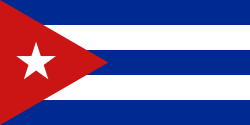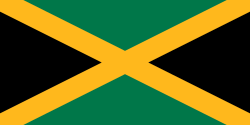Mark McKoy
Mark McKoy (* 10. Dezember 1961 in Georgetown, Guyana) ist ein ehemaliger kanadischer (später österreichischer) Hürdenläufer und Sprinter, dessen Spezialdisziplin der 110-Meter-Hürdenlauf war.
Der aus der Karibik stammende McKoy verbrachte seine Kindheit in England und kam als Jugendlicher nach Kanada. Zum ersten Mal erregte der Hürdensprinter internationales Aufsehen bei den Commonwealth-Spielen 1982, bei denen er Gold gewann. Bei den Leichtathletik-Weltmeisterschaften 1983 in Helsinki kam er ins Finale und wurde Vierter. Diesen undankbaren Platz belegte er auch bei den Olympischen Spielen 1984 in Los Angeles. Bitter endeten für ihn nach weiteren Finalteilnahmen in den Zwischenjahren die Olympischen Spiele 1988 in Seoul. Nach der wegen Dopings erfolgten Disqualifikation seines kanadischen Sprintkollegen Ben Johnson trat das kanadische Team in der 4-mal-100-Meter-Staffel nicht mehr an. Im Hürdenlauf wurde er, nachdem er in eine Hürde getreten war, nur Siebter. Er geriet ebenso wie Johnson unter Dopingverdacht, welcher sich schließlich bestätigte. Daraus resultierte eine zweijährige Sperre.
Zu den Weltmeisterschaften 1991 in Tokio kehrte er in den Leistungssport zurück und wurde wie schon so oft Vierter. Erst die Olympischen Spiele 1992 in Barcelona brachten schließlich Genugtuung nach einer zehnjährigen von Höhen und Tiefen geprägten Karriere: McKoy wurde Olympiasieger.
Während seiner zweijährigen Sperre war McKoy nach Österreich umgesiedelt und startete nach seiner Einbürgerung 1994 noch einige Male für den österreichischen Verband. Mark McKoy hält seit 1986 außerdem den Hallenweltrekord über die selten gelaufene Distanz von 50 Meter Hürden.
Persönliche Bestzeiten
- 50 m (Halle): 5,78 s, 7. Februar 1996, Moskau
- 60 m (Halle): 6,49 s, 6. März 1993, Karlsruhe
- 100 m: 10,08 s, 2. Juli 1993, Villeneuve-d’Ascq
- 50 m Hürden (Halle): 6,25 s, 5. März 1986, Kōbe (Weltrekord)
- 60 m Hürden: 7,41 s, 14. März 1993, Toronto
- 110 m Hürden: 13,08 s, 2. Juli 1993, Villeneuve-d’Ascq
Weblinks
- Athletenporträt beim ÖLV
- Mark McKoy in der Datenbank von World Athletics (englisch)
- Mark McKoy: Dopingsünder, Stasi-Opfer, Olympiasieger Artikel von Florian Vetter auf derstandard.at
| Personendaten | |
|---|---|
| NAME | McKoy, Mark |
| KURZBESCHREIBUNG | kanadisch-österreichischer Hürdenläufer und Olympiasieger |
| GEBURTSDATUM | 10. Dezember 1961 |
| GEBURTSORT | Georgetown, Guyana |
Auf dieser Seite verwendete Medien
Olympic Rings without "rims" (gaps between the rings), As used, eg. in the logos of the 2008 and 2016 Olympics. The colour scheme applied here was specified in 2023 guidelines.
US Flag with 45 stars. In use 4 July 1896–3 July 1908. Created by jacobolus using Adobe Illustrator, and released into the public domain. This flag was used during the Spanish-American War.
US Flag with 45 stars. In use 4 July 1896–3 July 1908. Created by jacobolus using Adobe Illustrator, and released into the public domain. This flag was used during the Spanish-American War.
US Flag with 48 stars. In use for 47 years from July 4, 1912, to July 3, 1959.
The Canadian Red Ensign used between 1921 and 1957.
This image has compared for accuracy (mainly colors) using an image from World Statesmen. The only change is making the maple leaves green from red. This image has compared for accuracy (mainly colors) using an image from World Statesmen. The most recent version of this image has changed the harp into one with a female figure; see [http://flagspot.net/flags/ca-1921.html FOTW
Die Staatsflagge der Deutschen Demokratischen Republik, vom 1. Oktober 1959 bis 3. Oktober 1990
Flag of Canada introduced in 1965, using Pantone colors. This design replaced the Canadian Red Ensign design.
US Flag with 46 stars. In use 4 July 1908–3 July 1912. Created by jacobolus using Adobe Illustrator, and released into the public domain.
Other version: Image:US 46 Star Flag.svgUS Flag with 44 stars. In use 4 July 1891–3 July 1896. Created by jacobolus using Adobe Illustrator, and released into the public domain.
The Canadian Red Ensign used between 1921 and 1957.
This image has compared for accuracy (mainly colors) using an image from World Statesmen. The only change is making the maple leaves green from red. This image has compared for accuracy (mainly colors) using an image from World Statesmen. The most recent version of this image has changed the harp into one with a female figure; see [http://flagspot.net/flags/ca-1921.html FOTW














